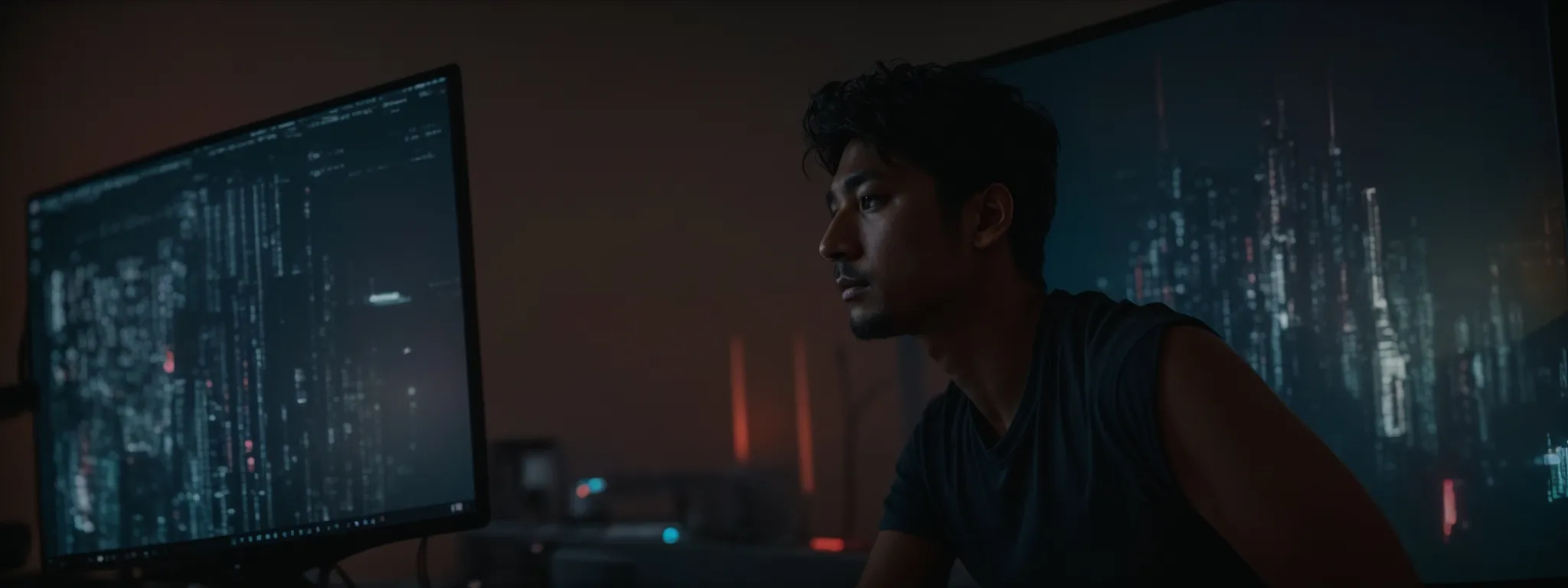Flash and SEO: Using Flash on Websites Strategically
Maximizing SEO Potential With Strategic Flash Usage on Websites In the rapidly evolving landscape of search engine optimization, the compatibility of Flash content with SEO criteria continues […]
Maximizing SEO Potential With Strategic Flash Usage on Websites
In the rapidly evolving landscape of search engine optimization, the compatibility of Flash content with SEO criteria continues to spark debate among webmasters and developers.
While the announcement of Adobe Flash’s death by major browsers like Mozilla signaled a shift in multimedia content, understanding how to leverage Flash for SEO without compromising search engine indexing remains a valuable skill.
This article explores strategic methods for integrating Flash in a way that enhances both the user experience and search rankings.
LinkGraph’s SEO services specialize in finding the balance where multimedia meets search engine friendliness.
Keep reading to discover how to optimize your Flash content for visibility and engagement without sacrificing your site’s SEO potential.
Key Takeaways
- Effective SEO for Flash Content Requires Alternative Text and Strategically Placed Meta Descriptions
- HTML5 Emerges as a Superior Alternative to Flash, Promoting Better Indexing by Search Engines and Wider Device Compatibility
- Page Speed and Device Compatibility Are Crucial SEO Factors Impacted by Flash, Necessitating Optimization or Alternative Solutions
- Progressive Enhancement Strategies Help Maintain SEO Integrity on Flash-Heavy Websites by Ensuring a Crawlable HTML Foundation
- LinkGraph Advocates for the Use of Tools Like Adobe Wallaby to Convert Flash to HTML5 for Improved SEO and User Accessibility
Understanding Flash Content and SEO Compatibility

In an era where website performance and user experience are paramount, the interplay between Flash-based multimedia content and search engine optimization remains a topic of robust discussion among webmasters and SEO strategists.
From its inception as a dominant force in delivering interactive animation and video, Flash, originally a product of Macromedia now developed by Adobe, has posed a unique set of challenges for search engine crawlers aiming to accurately index website content.
As digital professionals reconcile the dynamic nature of Flash with the methodologies behind enhancing a website’s visibility, it is essential to understand the implications of employing Flash content, dissect the procedures search engines adopt to navigate it, and confront the SEO tribulations it harbors.
This examination becomes all the more critical as the web continues to evolve, often rendering past approaches obsolete and prompting the need for ongoing innovation in optimizing Flash-enhanced sites.
Defining Flash in the Context of Web Development
In the realm of web design, Flash once stood as the cornerstone for integrating vibrant animations, video players, and interactive experiences. Renowned for its ability to create visually impressive web pages, Flash files required a dedicated plugin, such as the Flash Player, for proper execution, making them a staple in web developers’ arsenals.
However, the onset of new web standards such as HTML5, accompanied by growing concerns over security risks and device compatibility, signaled a reevaluation of Flash’s role within the context of web development. This shift affected not only user experience but also the approach to SEO as search engine crawlers grapple with the complexities of indexing Flash content effectively.
Evaluating How Search Engines Index Flash Content
Assessing the nuances of how search engines interpret Flash content illuminates the gaps within traditional search engine indexing mechanisms. Despite improvements over time, search engine crawlers still face obstacles when sifting through Flash sites, often missing the embedded textual and multimedia elements that profoundly influence search rankings.
LinkGraph’s SEO services recognize the inherent complexities presented to search crawlers by Flash content and work diligently to mitigate any detriments to a website’s SEO potential. Their strategic approach includes rigorously optimizing alternative attributes and ensuring that Flash elements do not impede the thorough indexing of a client’s web pages.
Identifying Common SEO Challenges With Flash
Flash content has historically presented a multitude of challenges for website owners aiming to climb the search engine results ladder. The primary issue lies in the tendency of Flash sites to obscure content from search engine crawlers, creating a barrier to content discovery and, consequently, to visibility within search results.
Given these complexities, LinkGraph tailors SEO services to address Flash-related challenges, ensuring that their clients’ Flash components are not just visually engaging but also strategically optimized for search criteria. They cultivate a precise balance between aesthetic appeal and the technical requirements for search engine optimization, crafting a pathway for enhanced search rankings despite the use of Flash.
Best Practices for Incorporating Flash in SEO Strategy

As the digital landscape matures, aligning Flash content with SEO best practices is imperative for retaining competitive search engine visibility.
Crafting a harmonious integration of Flash with structural HTML content, providing accessible alternatives to Flash media, and optimizing for mobile responsiveness are crucial steps in a seamless SEO strategy.
Within this framework, professionals strive to leverage the engaging qualities of Flash while mitigating potential issues in user experience and search engine rankings.
The endeavor to refine web presence through these methods underscores the ongoing commitment to responsive web design and astute search engine optimization.
Balancing Flash Elements With HTML Content
Striking the right equilibrium between Flash and HTML content emerges as a cornerstone for modern SEO strategies, especially for companies like LinkGraph offering specialized SEO services. They emphasize the importance of Flash elements complementing, rather than overshadowing, the core HTML structure of a webpage, thus enabling search engine crawlers to more readily discover and index essential content.
LinkGraph’s expertise includes crafting web pages where Flash animations enhance the narrative without compromising the textual and link-based integrity crucial for search engine algorithms. Their tactful integration ensures that each Flash movie operates seamlessly alongside HTML content, bolstering the website’s SEO without detracting from the visitor’s journey.
Implementing Accessible Alternatives for Flash
Recognizing the necessity for accessibility, LinkGraph advocates for the development of Flash alternatives that ensure inclusive user experiences across various devices and web browsers. The increasing abandonment of Flash by major players like Mozilla and the phasing out of Adobe Flash point towards a future where accessible, non-Flash methods of delivering content are not just advantageous, but essential for SEO success.
The company’s commitment to fostering website SEO extends to advising clients on the deployment of Flash alternatives that resonate with both users and search engine criteria. LinkGraph’s approach underscores a strategic balance, enabling content developers to maintain the rich, multimedia experience for the customer while simultaneously optimizing for search engine indexing and user accessibility.
| SEO Consideration | Flash Implementation | HTML5 / Accessible Alternative |
|---|---|---|
| Indexability by Search Engines | Difficult for crawlers to parse | Easily parsed and indexed |
| Compatibility across Devices | Limited by the need for Flash Player | Universal compatibility, no additional player required |
| User Accessibility | Not supported by all users’ technology | Inclusive and compliant with web standards |
Ensuring Mobile-Friendly Flash Usage
Ensuring mobile-friendly use of Flash on websites is a critical component of SEO in a world increasingly dominated by smartphone and tablet usage. LinkGraph’s SEO services prioritize this aspect, recognizing that despite the fading relevance of Flash, any implementation must be responsive and adaptable to meet the demands of a mobile audience without compromising search rankings.
The team at LinkGraph actively works with their clients to prevent common pitfalls associated with Flash content on mobile devices, focusing on speed optimization and cross-platform compatibility. Their dedication ensures that any remaining Flash elements on a client’s website do not detract from the user experience or the site’s performance on mobile search results.
Optimizing Flash Content for Better Search Visibility

Navigating the intricacies of Flash usage while maintaining SEO efficacy requires a carefully calibrated approach, one that acknowledges its creative allure yet respects the foundations of search engine optimization.
Professionals aiming to capitalize on Flash’s visual strengths while upholding their web property’s visibility must embrace SEO-friendly design principles.
Such principles encompass the judicious use of meta tags, crafting descriptive elements that render Flash content transparent to search crawlers, and seamlessly embedding keywords that resonate with both the brand’s messaging and search criteria.
Evaluating these strategies underlines the significance of an astute SEO framework, ready to accommodate the nuances of Flash within the digital tapestry of a website’s architecture.
Adopting SEO-friendly Flash Design Principles
Embracing SEO-friendly Flash design principles is a sophisticated endeavor that necessitates a deep understanding of both technical SEO factors and the rich potential of multimedia. LinkGraph espouses a comprehensive approach, guiding website owners to embed Flash with an acute awareness of how search engines digest and interpret Flash files for better visibility.
The implementation of SEO-driven Flash design demands a meticulous calibration of Flash elements to ensure they bolster rather than hinder the website’s organic search presence. Consideration of technical SEO components alongside Flash deployment defines the foundation of an SEO-compliant Flash strategy:
| SEO Aspect | Impact on Flash Design | Strategy for Optimization |
|---|---|---|
| Visibility to Search Crawlers | Flash can obscure textual content | Embed alternative text and links beneath Flash |
| Keyword Integration | Potential disconnection from core content | Integrate primary keywords in Flash content descriptors |
| Loading Speed | Flash might slow down page load times | Optimize file sizes and leverage asynchronous loading |
By adhering to these SEO-friendly practices, LinkGraph empowers clients to marry the artistry of Flash with the precision of SEO, enticing both visitors and search engine crawlers in a symphony of well-orchestrated web design and strategic content placement.
Utilizing Meta Tags and Descriptions in Flash
Utilizing meta tags and descriptions enhances the SEO value of Flash content on websites. By embedding relevant meta information, LinkGraph ensures search engines can contextualize Flash files, aiding in their proper indexing and contributing to search visibility.
The thorough inclusion of keyword-rich descriptions within Flash content complements the visual appeal with SEO substance. LinkGraph meticulously curates metadata to align with a client’s SEO strategy, facilitating a stronger presence in search engine rankings:
- Identification and integration of targeted keywords within meta tags for each Flash file.
- Crafting of concise, descriptive tags that encapsulate the essence of the Flash content and resonate with search engine algorithms.
- Strategic placement of meta descriptions to serve as signposts for search crawlers, guiding them through the rich media environment.
Integrating Keywords Within Flash Content
Incorporating keywords within Flash content is a pivotal strategy for bolstering search visibility. LinkGraph assists clients in strategically dispersing keywords throughout Flash animations and interactive features, enhancing relevance and discoverability amidst search criteria.
Keywords serve as essential beacons for search engines to latch onto within Flash files, augmenting their clarity and context within search results:
- Selection of keywords that mirror a website’s core topics and areas of expertise.
- Inclusion of prominent keywords in Flash content narratives that align with the overall messaging of the web page.
- Utilization of keywords that forecast user search behavior and trends to maintain relevance in search engine results.
The Role of Flash in Modern Web Design and SEO

As web technologies evolve, the conversation around Flash’s relevance continues to garner attention from SEO professionals and web designers alike.
While its innovative applications in the past revolutionized the digital experience, today’s focus lies in understanding how strategic Flash usage can coexist with the dominant presence of HTML5 and CSS3, and what impact these choices have on page speed and overall user experience.
This section will delve into the shifts in Flash utilization within the industry, examine its compatibility with emerging web standards, and evaluate the consequential effects on a site’s technical performance and user engagement.
Analyzing Current Trends in Flash Usage
Flash’s prominence in web design has waned in recent years, with a marked pivot towards newer, more SEO-friendly technologies that enhance user experience and website performance. This shift reflects a broader trend in web development that prioritizes the seamless integration of multimedia content without sacrificing search engine visibility or compatibility across a diverse array of devices and browsers.
The decline in Flash utilization can be largely attributed to its diminishing support among major tech companies and an increased emphasis on open web standards. This transition impacts not only the way webmasters and developers create multimedia experiences but also how SEO professionals adapt strategies for optimal search engine ranking:
| Trend | Impact on SEO | Web Development Shift |
|---|---|---|
| Decreased Flash Usage | Improved indexing and search result performance | Movement towards HTML5, CSS3, and JavaScript |
| Rising Importance of Mobile | Enhanced focus on mobile-first design and mobile search rankings | Adaptive and responsive web design |
Comparing Flash With HTML5 and CSS3 Effects
The interplay between Flash and the triumvirate of HTML5, CSS3, and JavaScript has had a profound impact on the world of web design, reshaping the narrative around rich, interactive content. HTML5 emerges as a powerful successor by allowing developers to imitate complex Flash animations and interactive features natively, circumventing the need for proprietary plugins and enabling content to be seamlessly indexed by search engines, thereby offering a boost in SEO value.
When juxtaposed with HTML5 and CSS3, Flash’s constraints become more evident, particularly in the context of device compatibility and optimization for search engine crawlers. Modern web standards foster a more accessible and open web environment, whereas Flash’s platform-specific requirements often result in fragmented user experiences and additional hurdles for search engine indexing, factors that have led to a steady migration towards HTML5 as the preferred choice for multimedia effects on the web.
Assessing the Impact of Flash on Page Speed and User Experience
Flash’s influence on page speed is a critical component in the SEO calculus. Heavy Flash files can significantly slow down a website, leading to increased bounce rates and decreased engagement. Indeed, page load time is a known ranking factor for search engines, marking the speed ramifications of Flash content as a pivotal SEO concern.
The user experience deteriorates when Flash content proves incompatible with their device, a frequent occurrence given Flash’s declining support on modern platforms. This mismatch can leave users unable to access essential portions of a website, directly impeding the conversion journey and striking a blow to overall SEO effectiveness.
| SEO Factor | Impact of Flash | Resulting Action |
|---|---|---|
| Page Speed | Can increase loading times | Optimization or replacement with lighter alternatives |
| Device Compatibility | Content often inaccessible on modern devices | Adopting device-agnostic web technologies |
| User Engagement | Potentially negative if Flash disrupts user flow | Strategic usage or transition to HTML5 for interactivity |
Flash and Rich Media – Enhancing User Engagement and SEO

In a meticulously curated SEO landscape where engaging users while adhering to search engine guidelines is paramount, Flash remains an attention-grabbing yet complex element.
The thoughtful incorporation of interactive Flash elements into a website’s design has the power to captivate an audience, anchoring their attention with rich media experiences.
However, these must be purposefully executed to ensure they contribute positively to user engagement metrics, such as time on site and bounce rates.
Discerning the delicate balance between aesthetic allure and SEO efficiency is crucial for web developers and SEO experts alike to fully harness the potential of Flash within today’s sophisticated online environments.
Incorporating Interactive Flash Elements Purposefully
To navigate the dynamic waters of user engagement and search engine optimization simultaneously, LinkGraph artfully integrates interactive Flash elements into web designs. They execute this with a clear focus on enhancing the user’s journey, ensuring that every Flash movie enriches the narrative without overshadowing the SEO-friendly aspects of a site’s structure.
LinkGraph’s dedication to professional web development becomes evident in their approach to Flash content. By selectively incorporating Flash where it offers genuine value to the user experience, the company affirmatively addresses both the aesthetic and performance metrics that Google and other search engines use to evaluate and rank web pages.
Measuring User Engagement Metrics for Flash Content
An accurate assessment of user engagement around Flash content is integral to LinkGraph’s methodology, allowing them to distill actionable insights to amplify a site’s SEO framework. By tracking metrics such as time spent on pages with Flash elements and interaction rates, they can gauge the effectiveness of Flash in capturing and retaining user interest.
LinkGraph leverages advanced analytics to pinpoint the impact Flash content has on overall website performance: these user engagement metrics inform strategic decisions on whether Flash enhances the user experience or requires adjustment. User behavior patterns, such as click-through rates for Flash-based CTA buttons, serve as valuable indicators of Flash’s contribution to the site’s conversion goals:
| User Engagement Metric | Indication of Flash Effectiveness | SEO Consideration |
|---|---|---|
| Time Spent on Page | Longer duration suggests captivating content | Positive signal to search engines for relevancy |
| Interaction Rate | High rates demonstrate effective Flash utilization | Engagement can improve search rankings and visibility |
| Click-Through Rate for Flash CTAs | Indicative of Flash’s persuasive power | Directly relates to improved conversion potential |
Using Flash to Improve Time on Site and Bounce Rates
LinkGraph’s strategic use of Flash content seeks to enhance key user engagement metrics, particularly time on site and bounce rates. By integrating captivating Flash animations and interactive elements, they encourage visitors to spend more time exploring the website, which is a positive behavioral signal to search engines and can lead to improved SEO rankings.
Furthermore, through meticulous planning and execution, Flash elements can be utilized to guide visitors to other sections of the website, effectively reducing bounce rates. LinkGraph harnesses this potential by ensuring that Flash content is both appealing and functional, encouraging the audience to navigate deeper within the site, thereby signaling content relevance and value to search engine algorithms.
Overcoming SEO Limitations of Flash Websites

Navigating the SEO landscape with Flash-infused web properties demands ingenuity and adherence to a set of nuanced tactics that circumvent the inherent limitations of Flash websites.
For businesses intent on optimizing their online presence, the focus shifts to employing progressive enhancement techniques, leveraging navigational aids such as sitemaps and robots.txt specifically for Flash content, and exploring technological solutions like Adobe Wallaby that facilitate the conversion of Flash to more SEO-friendly formats.
These focused efforts promise to bridge the divide between the rich, interactive experiences that Flash offers and the stringent requirements set forth by search engine algorithms.
Employing Progressive Enhancement Techniques
Progressive enhancement techniques are embraced by LinkGraph to ensure that Flash content does not compromise a website’s SEO integrity. This strategy focuses on building a solid foundational webpage with HTML content that is enhanced, but not replaced, by Flash, allowing search crawlers to access and index the site’s core information effectively.
LinkGraph employs this approach to deliver a robust user experience where advanced Flash features are layered on top of basic, accessible content. This method ensures that even if Flash elements are overlooked by search engines, the essential information remains crawlable and indexable, bolstering a website’s search visibility.
Leveraging Sitemaps and robots.txt for Flash Content
LinkGraph employs tactical foresight in utilizing sitemaps and robots.txt files to enhance the SEO capabilities of websites with Flash content. By creating detailed sitemaps that include the locations of Flash files, they improve the visibility and indexing chances of this content for search engine crawlers.
Furthermore, the application of robots.txt files by LinkGraph serves to instruct search engine crawlers on how to interact with Flash content. They meticulously configure these files to facilitate the efficient crawling and indexing process, ensuring that Flash sites can achieve a presence in search results that rivals their HTML counterparts.
Exploring Solutions Like Adobe Wallaby for Flash Conversion
LinkGraph acknowledges the progressive applications such as Adobe Wallaby, which presents a strategic solution for converting Flash animations into HTML5. This technology enables a seamless transition, maintaining the integrity of the original multimedia content while significantly enhancing SEO compatibility and user accessibility.
These forward-thinking practices, championed by LinkGraph, facilitate the preservation of valuable Flash-based assets, ensuring their continued effectiveness within the ever-evolving standards of web development and search engine optimization. The use of conversion tools like Wallaby exemplifies a proactive approach to modernizing legacy Flash content for optimal search visibility.
Conclusion
Maximizing the SEO potential of websites with Flash content requires a strategic and nuanced approach to web design.
As Flash’s popularity declines in favor of HTML5 and other web standards, SEO professionals and webmasters must adapt by ensuring Flash elements are used purposefully and complement the core HTML structure of a webpage.
This balance is crucial to allow search crawlers to index content effectively, maintain device compatibility, and offer a rich user experience.
By embedding alternative text, leveraging meta tags, and integrating keywords harmoniously within Flash content, SEO professionals can enhance a site’s search visibility.
Moreover, adopting tools like Adobe Wallaby to convert Flash into SEO-friendly formats and employing progressive enhancement techniques negates Flash’s limitations, ensuring that rich, interactive experiences don’t compromise search rankings.
Ultimately, careful use of Flash, coupled with advanced analytics and user engagement metrics, can retain the medium’s creative allure while upholding the website’s SEO efficiency.














































































